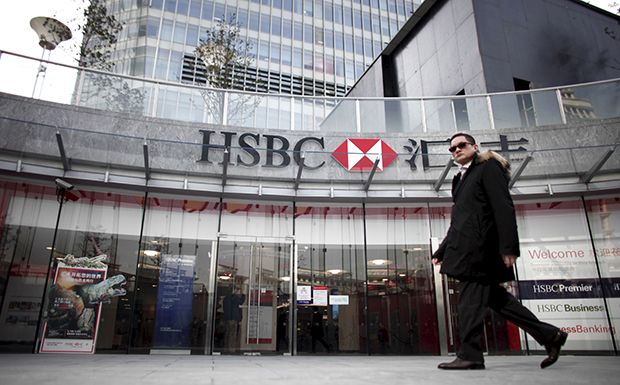HSBC goes on funding spree ahead of new regulation.
HSBC historically had little need for wholesale funding in the public debt markets.
But facing one of the largest targets in Europe due to new regulatory requirements, the bank stunned investors and rival banks alike as it rapidly priced a series of deals in the first half of 2016, tackling those needs head-on.
As one of the world’s major lenders, HSBC must build up safety buffers of debt to meet a requirement known as Total Loss Absorbing Capacity (TLAC) that aims to lift the burden of future bank failures from taxpayers’ shoulders.
It is aiming to raise around US$70bn by 2019 – US$51bn to replace maturing debt and between US$10bn and US$30bn to comply with that standard.
That represents a “seismic shift” for a bank that has traditionally issued in limited volumes, said group treasurer Bryan Pascoe. It has also had to switch from issuing out of its operating companies to the holding company to make bonds easier to bail in.
“We’re coming from a relatively low starting point in volume terms because, principally, we’ve never needed to rely on wholesale funding to support our balance sheet and growth, given the strength and breadth our deposit base,” he said.
“From a purely commercial perspective, we have no need for the additional wholesale TLAC funding.”
The bank swiftly overturned fears that those volumes would be too much for the market too absorb, pricing almost US$11bn-equivalent in TLAC-eligible senior debt in euros and US dollars in just one week in March 2016.
Another US$8bn followed in May, the largest ever deal issued in dollars by any bank, taking the total past US$18.5bn-equivalent. Demand for the three deals was around US$45bn, according to market sources.
HSBC has taken care not to wait indefinitely for perfect market windows, while also being mindful of the impact of expensive wholesale debt on the balance sheet, Pascoe said.
“HSBC is pursuing a strategy of just executing deals, regardless of market conditions. It’s admirable – not all banks can do that,” said a rival banker.
Building foundations
The success of those trades was instrumental not just for HSBC but for the banking sector more broadly, proving the depth of demand for loss-absorbing debt as lenders across Europe start to address their own shortfalls.
Orders for the US$7bn three-part trade in March alone drew US$19bn in orders. All three tranches were tightened by 22.5bp–25bp from initial price talk and at final pricing offered just 7bp of new issue concession, a strong result in a week flooded by financial paper.
“It’s a good sign for all Yankee FIG borrowers,” Jonny Fine, head of investment-grade syndicate at Goldman Sachs, said at the time.
The €3.25bn six and 11-year bonds drew orders over €10bn from 540 accounts, by far the biggest book for any European bank deal in any format for months.
The deal was credited with providing a much-needed shot of confidence in Europe, where the market for holdco senior debt had struggled to find its feet.
Not all about TLAC
HSBC has also demonstrated strong execution in the subordinated market.
Its US$2bn 6.875% perpetual non-call five-year Additional Tier 1 bond in May 2016 drew the biggest book for a deal in that format all year after the violent sell-off in February. It priced a €1bn Tier 2 bond just one week later.
“We had been monitoring yields closely as we did not want to validate elevated levels, so we bided our time. AT1 at the right price is an important element in our capital strategy, so we were very happy to have successfully taken US$2bn out of the market,” said Pascoe.
There was no need to rush into either the AT1 or Tier 2 market in 2016, given the bank’s strong capital position and the fact that it had also issued at regular points in 2015.
It issued a well-timed €1bn Tier 2 bond in June 2015, for example – a market that had struggled to lift off since the first quarter and which closed again soon after.
HSBC’s decision to issue capital so close to the UK’s June referendum on EU membership surprised some market participants.
But there was no guarantee that market conditions would be strong after the UK vote, regardless of the outcome, Pascoe said.
“We didn’t want to be in a situation where we missed an attractive opportunity. As with all banks, we want to be on a sensible glide path to end-point requirements,” he added.
HSBC will not need to be so active in the second half of 2016, given its progress since March, freeing it up to consider more tactical trades.
“Obviously sterling in due course, and other sophisticated developed markets where we can do transactions in reasonable size that would represent benchmarks in the context of those markets,” Pascoe said.
That particularly makes sense where the bank can downstream the proceeds in local currencies to legal entities that can actually use the funding, such as Canada or Australia.
“We’re already extremely well positioned for where we wanted to be, looking at the year as a whole,” said Pascoe.
To see the digital version of this special report, please click here
To purchase printed copies or a PDF of this report, please email gloria.balbastro@thomsonreuters.com




